Kremlin creates illusion of a religious clash between Belarus Orthodox and Catholics
Open source evidence shows overall solidarity
Kremlin creates illusion of a religious clash between Belarus Orthodox and Catholics

Open source evidence shows overall solidarity among religious groups in Belarus
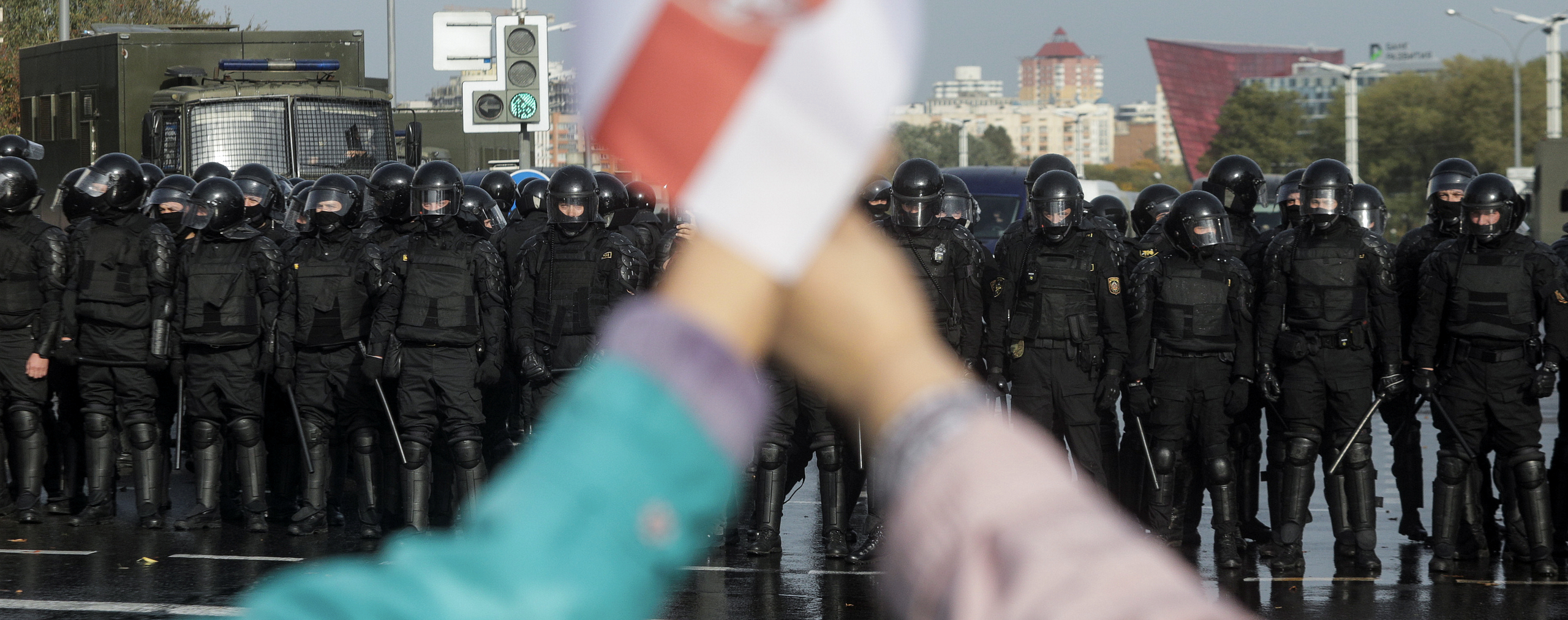
The Kremlin is attempting to create the illusion of tensions between Catholic and Orthodox believers in Belarus allegedly fueled by the United States, despite the fact that there is no evidence that religion is playing a divisive role in the current political crisis in Belarus. These claims by pro-Kremlin officials in Russia are trying to fan further suspicion that the West is meddling in Belarus affairs, as well as turn the attention away from the real problem — the lack of trust regarding the legitimacy of Belarusian President Alyksandr Lukashenka.
On September 29, 2020, Sergey Naryshkin, director of Russia’s Foreign Intelligence Service, was quoted on the service’s website that the United States is planning a clash between Belarus Orthodox and Catholic believers by encouraging protests and staging a provocation targeting a Catholic priest to spark further anti-governmental unrest. The Catholic Church in Belarus, whose Archbishop Tadeush Kandrusevich has been denied entering Belarus since August 31, responded to the claim by saying that it is “total nonsense, fake information, lies that has nothing in common with the truth.” Later, a representative of the Russian Orthodox Church backed Naryshkin’s claim, saying that protests in Belarus may take the form of religious divide among Catholic and Orthodox protesters. Multiple Kremlin-owned and pro-Kremlin media, as well as Belarusian state and independent media outlets, reported Naryshkin’s statement. Meanwhile, many media outlets, including Kremlin-owned RIA Novosti, also published the Catholic Church’s response.
Since the beginning of protests, Lukashenka has taken the role of religion in Belarus protests seriously. Catholic Archbishop Kandrusevich, who strongly condemned police violence against protesters, has been denied returning back to Belarus after his trip to Poland, with Lukashenka vaguely accusing him of receiving “tasks” during his visit. Additionally Russian Orthodox Church approved the resignation of Metropolitan Pavel, the head of the Belarus Orthodox Church, after Pavel called Lukashenka to stop the violence and visited a hospital to see injured protesters. The newly appointed leader, Metropolitan Venyamin, is considered to be loyal to Lukashenka.
Orthodox Christians are the largest religious group in Belarus. Belarusian Catholics mostly live in the west, where Polish influence was historically significant.
Interfaith solidarity
Both Catholics and Orthodox groups advocated against election interference and the falsification of voting results prior to presidential elections on August 9, 2020. A group of Catholics in Minsk and Gomel organized a campaign called “Catholic does not falsify,” appealing to religious election staffers. A day prior to the election, Dzmitry Pavlioukevich, an Orthodox deacon from Grodno, published a poster on Facebook saying, “Orthodox against: falsification, personal humiliation and personal pressure.” The post garnered modest engagement, though, with 171 reactions and 54 shares at the time of publishing.
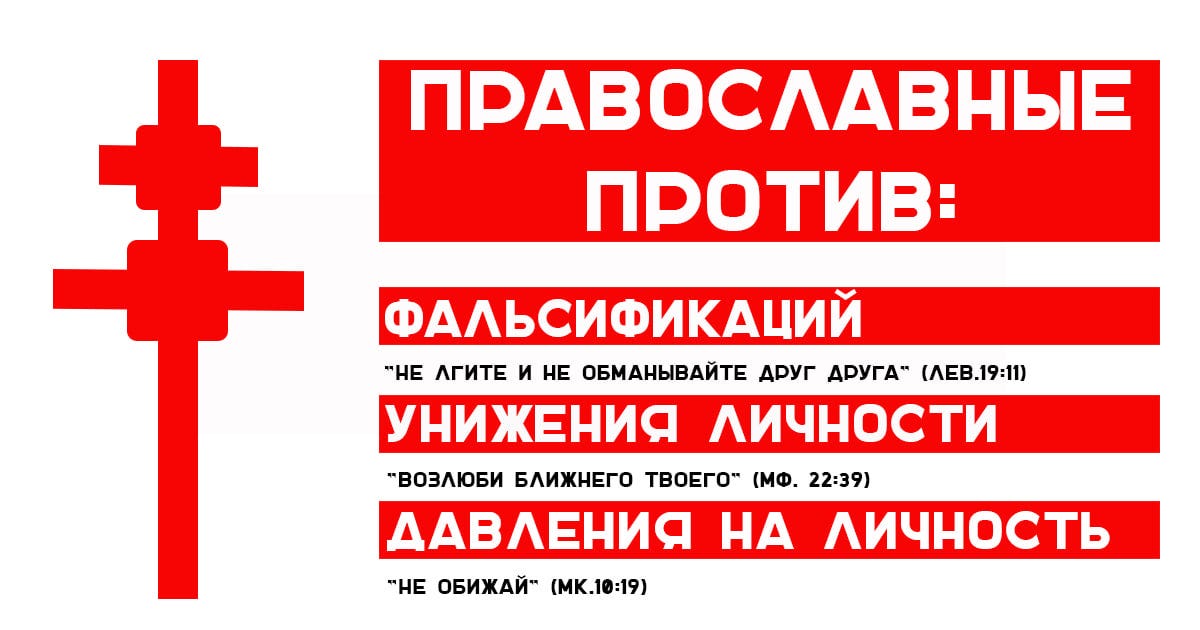
Soon after the first evidence of violent beatings and torture of protesters appeared, Belarusian Christians from Orthodox, Catholic and Protestant denominations gathered on August 13 by Saint Mary’s Catholic Church in Minsk to march to the saint’s Orthodox cathedral and pray to stop the violence in Belarus. “Orthodox came with icons, Catholics with crosses, and Protestants with bibles,” the opposition Belarus media outlet Naviny.by wrote. An image from the event below showed people from each denomination holding artifacts.
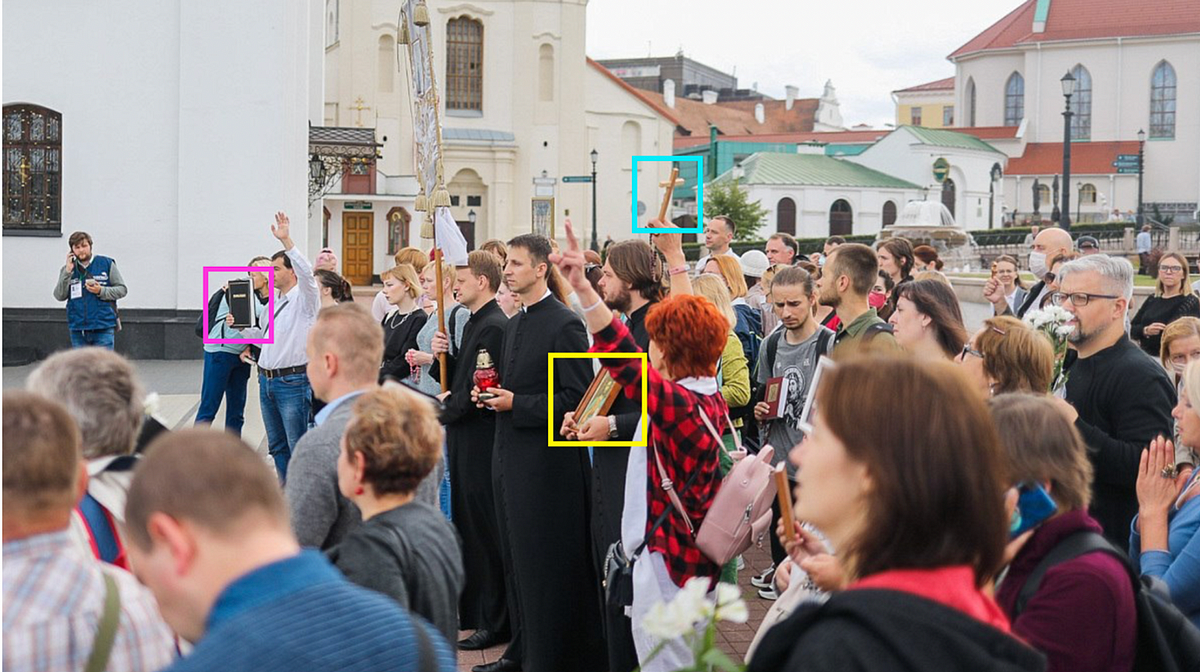
At first, the Orthodox Church distanced itself from the event by posting on the church’s official website, “The position of the Belarusian Orthodox Church is to call the opposing sides for peace, de-escalation and mutual understanding, and not to heat up the situation and incite to various actions.” Later, Alexander Shramko, an orthodox priest who was involved in organizing the religious procession, told RFERL, “After August 13, praying happened every day at one o’clock.” A report by Belarusian Orthodox media outlet Sobor.by corroborated the events of daily prayers. On August 15, the Orthodox Church published a call to hold a prayer in every Orthodox church in Belarus “for the Belarus nation’s peace.”
Similarly, on August 18, representatives of the Greek Catholic Church, as well as Catholics, Orthodox, Protestants and Old Believers, joined a procession in Polatsk city in west Belarus for “legal, peaceful and united Belarus.” That same day, the Belarus Catholic Church live-streamed on an inter-religious prayer for Belarus that included not just Christian denominations, but also represented Islam and Judaism.
Another interfaith event happened on August 21, when Christians from different groups made a chain in Minsk from Kuropaty Tract, the place where Stalin’s regime carried out a mass execution, to the Okrestino detention center, where many protesters had been detained and tortured.
All these events demonstrate that there were no inter-religious tensions exhibited by protesters, but rather solidarity among them against police violence.
Lukashenka attempts to sow religious division
During a rally in Grodno on August 22, President Lukashenka took issue with Belarusian religious denominations engaging in politics and issued a veiled threat:
I am surprised about the position of our religious confessions. My dear clergymen, settle down and do your business. People should come to churches to pray! Churches are not for politics. People should come there following their soul, as it has always been. Do not follow the lead of the renegades. You will be ashamed for the position you, some of you, take now. And the state will not look at it with indifference.
While religious groups were initially united in joint condemnation of police violence, provocations by Lukashenka’s regime have created some tension, particularly regarding the status of Catholic Archbishop Tadeush Kandrusevich. For instance, on September 12, Belarusian Catholics in Minsk prayed to “stop persecution of the Church” and for the return of the archbishop “back to the motherland.” On September 14, Catholics again joined in a procession calling for Kandrusevich’s return.
Lukashenka supporters have also organized processions. One procession on August 20 featured a man with an Orthodox icon and cross. The rest in the column carried the red-green flag of Belarus. Some also carried St. George’s ribbon, an orange-and-black striped flag which is considered to be a pro-Kremlin symbol, as well as the flag of the Soviet Air Force. The participants also sang the WWII-era song “Katyusha.”
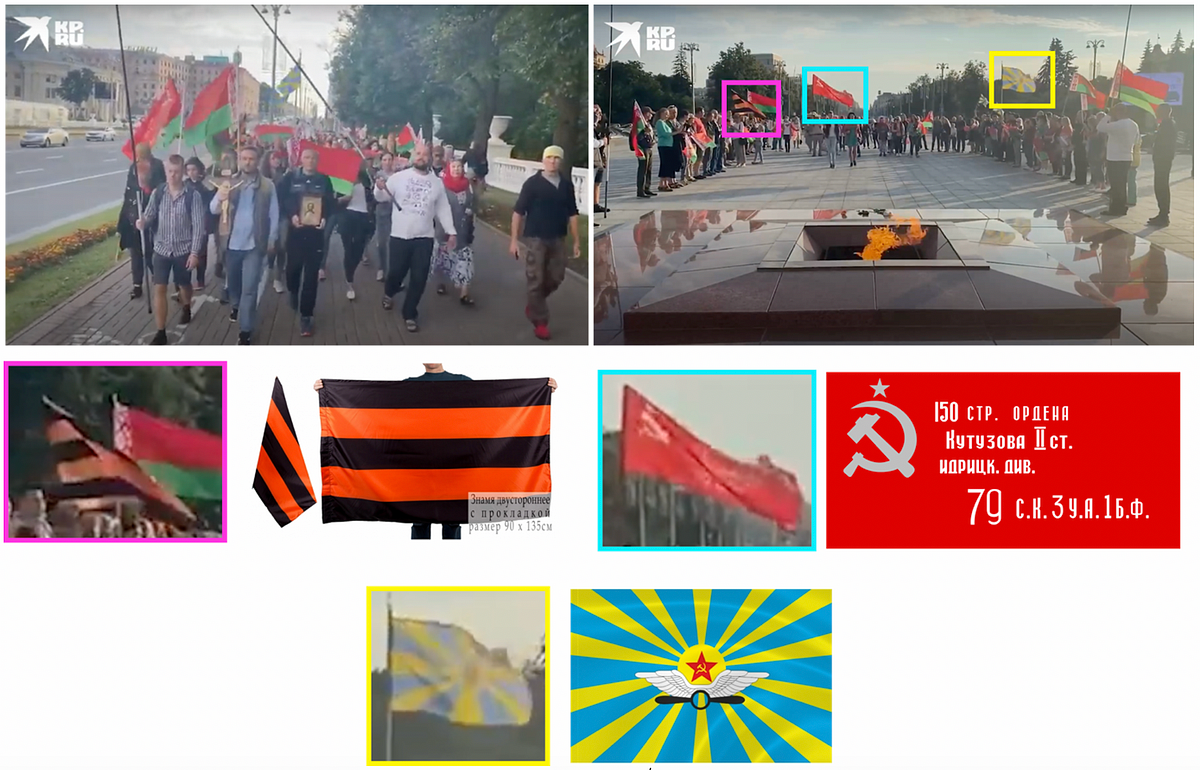
The procession repeated at least three additional times on September 8, September 10, and September 16, each featuring the same man at the front of the column. The marches were peaceful and did not provoke any religious clashes, according to videos shared by Sputnik Belarus and Komsamolyskaya Pravda, a pro-Kremlin media outlet.
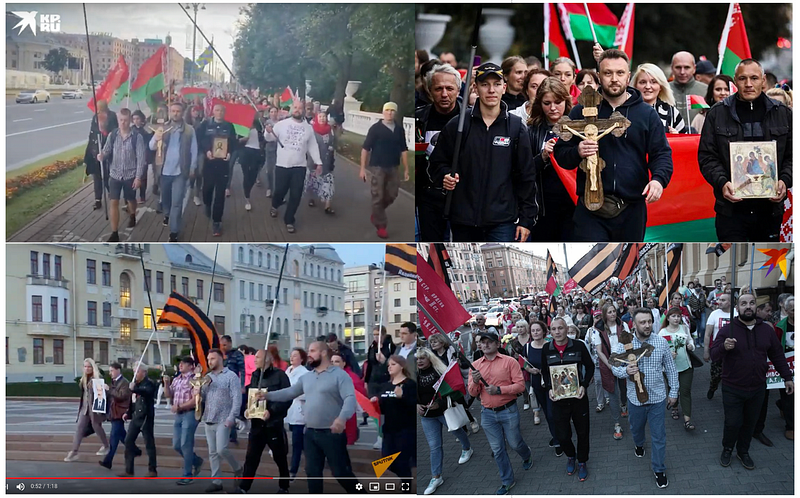
Based on the open-source evidence, the claim by the head of Russian intelligence service that religious denominations are on the verge of clashes should be considered with deep skepticism, as there are no public-facing indicators that there are any significant religious divisions among protesters in Belarus. While Belarusian Catholics have expressed frustration over the archbishop’s inability to return to the country, the idea that Catholics are fueling protests while Orthodox are loyal to Lukashenka is a hasty generalization and not reflected in real-life events.
Nika Aleksejeva is a Research Associate, Baltics, with the Digital Forensic Research Lab.
Follow along for more in-depth analysis from our #DigitalSherlocks.

